Part 14: December 11 Broadcast

You are listening to BBC radio 4. In an hour, we’ll be presenting a half an hour of traditional Christmas Carols. For the next hour, Professor David Stephenson will be presenting a documentary on the second 80 years war of the eighteenth century. This series will be running every third day, up to 50 episodes. If you want news of the current war in the Middle East please channel in to BBC radio 1.
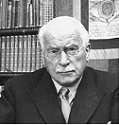 Good evening, and welcome to BBC radio 4. I’m Professor David Stephenson, professor of Dutch historical studies at Cambridge. This is the fourteenth part of our 50 episode special on the second 80 years war over Europe. Joining me for these broadcasts are fellow researchers and scholars Doctor Albert Andrews, specialist in German studies from the Berlin academy, Professor Robert Lowe, specialist in French studies at Cambridge, and a graduate student and technical assistant, Anton Thatcher. Last week, we discussed the second wave of Dutch conquest.
Good evening, and welcome to BBC radio 4. I’m Professor David Stephenson, professor of Dutch historical studies at Cambridge. This is the fourteenth part of our 50 episode special on the second 80 years war over Europe. Joining me for these broadcasts are fellow researchers and scholars Doctor Albert Andrews, specialist in German studies from the Berlin academy, Professor Robert Lowe, specialist in French studies at Cambridge, and a graduate student and technical assistant, Anton Thatcher. Last week, we discussed the second wave of Dutch conquest. And once again, this wave of conquest had slowed to a stop as the Dutch found themselves without the means to advance. They needed to look to an alternative to advancing in slow bounds while expending their every dollar repairing their army, and army expansion and reformation.
And once again, this wave of conquest had slowed to a stop as the Dutch found themselves without the means to advance. They needed to look to an alternative to advancing in slow bounds while expending their every dollar repairing their army, and army expansion and reformation. But the basis of all armies, the national banks. And what were the banks of the Dutch like?
But the basis of all armies, the national banks. And what were the banks of the Dutch like? For the Dutch, considered a massive trade Empire, one had commonly believed that their trade was their main source of income. However in truth, the Dutch actually had acquired the majority of money by taxing their European and Indian holdings. France, being the strongest industrial center for the Dutch provided more than any other holding in the Dutch empire, followed shortly by the highly economically reformed Spain. At eight million guilders from France and six million guilders from Spain, the Dutch tax take paid for a tremendous amount of the Dutch military at the time.
For the Dutch, considered a massive trade Empire, one had commonly believed that their trade was their main source of income. However in truth, the Dutch actually had acquired the majority of money by taxing their European and Indian holdings. France, being the strongest industrial center for the Dutch provided more than any other holding in the Dutch empire, followed shortly by the highly economically reformed Spain. At eight million guilders from France and six million guilders from Spain, the Dutch tax take paid for a tremendous amount of the Dutch military at the time.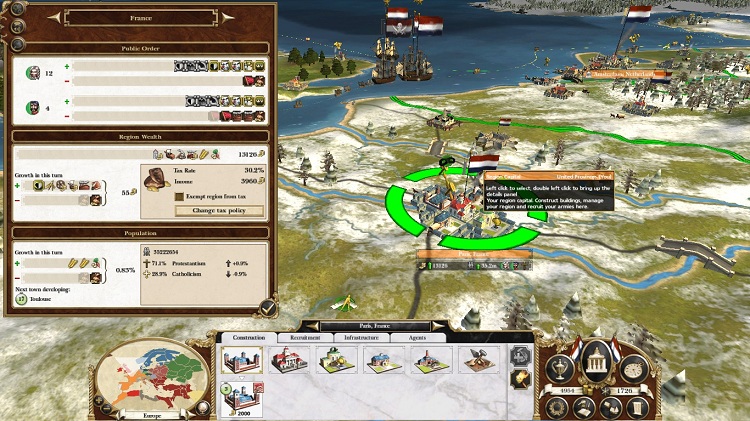
France had a population totaling half the total population of the United Provinces.
 Those fourteen million guilders from France and Spain were tremendous in a sense, but even they were not paying for a majority of the sixty-two million tax revenue the Dutch were earning every year from tax revenue, nor match the fourty-six million guilders in trade revenue they were earning at the time. The sheer numbers of industrial provinces across the Dutch Empire from India, South America to Central Europe were also earning several million guilders per year in tax revenue per province.
Those fourteen million guilders from France and Spain were tremendous in a sense, but even they were not paying for a majority of the sixty-two million tax revenue the Dutch were earning every year from tax revenue, nor match the fourty-six million guilders in trade revenue they were earning at the time. The sheer numbers of industrial provinces across the Dutch Empire from India, South America to Central Europe were also earning several million guilders per year in tax revenue per province.
Spain was the second wealthiest province of the United Provinces. The Dutch invested far less into Spanish factories than French ones.
 What primarily made these provinces so wealthy? To a very large degree, it was heavier urbanization. With over seventy-one million people within the Dutch Empire, mostly concentrated in the heavily industrial European cities, the Dutch provinces within Europe were powered by their vast population free to work their hundreds of factories. Textile mills, steel refineries, mines and industrial trading ports were major business within Europe. The tax revenue of those industries went into the coffers of the Western Atlantic Federation, and by default that meant the coffers of the United Provinces.
What primarily made these provinces so wealthy? To a very large degree, it was heavier urbanization. With over seventy-one million people within the Dutch Empire, mostly concentrated in the heavily industrial European cities, the Dutch provinces within Europe were powered by their vast population free to work their hundreds of factories. Textile mills, steel refineries, mines and industrial trading ports were major business within Europe. The tax revenue of those industries went into the coffers of the Western Atlantic Federation, and by default that meant the coffers of the United Provinces.
The lucrative textile factory of Bordeaux.
 Half of this population was in France. With over thirty-two million people in France, and their population steadily growing, cities in France were saturated with cheap, taxable workers, and the Dutch were more than willing to invest in the infrastructure of France to enhance their economy. To compare, New Grenada, which earned three and a half million guilders per year had a population of only thirty-six thousand. Much like many American colonies, New Grenada was taxable only for its massive reserve of natural resources, in this case gold, silver and gems. Provinces in the Americas that were not fortunate enough to possess such valued commodities were far more poor.
Half of this population was in France. With over thirty-two million people in France, and their population steadily growing, cities in France were saturated with cheap, taxable workers, and the Dutch were more than willing to invest in the infrastructure of France to enhance their economy. To compare, New Grenada, which earned three and a half million guilders per year had a population of only thirty-six thousand. Much like many American colonies, New Grenada was taxable only for its massive reserve of natural resources, in this case gold, silver and gems. Provinces in the Americas that were not fortunate enough to possess such valued commodities were far more poor. 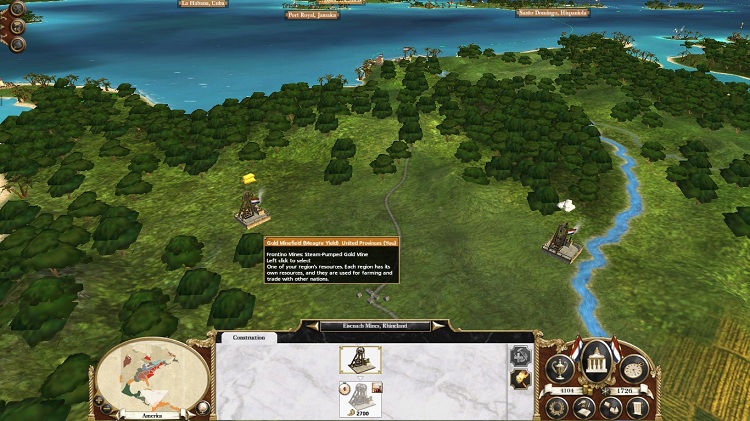
Mines in New Grenada meant the tax taken from the Americas could rival the tax income from Europe.
 Many colonies in the Americas had to rely on their farmland being used for plantations rather than productive farms exacerbating the problem of population. With land being used towards cash crops such as tobacco, cotton and sugar, the Americas couldn’t sustain as much of a growing population as the European states could, which focused on wheat, potatoes, cattle, sheep and vegetables. However, these abundant cash crops were of tremendous value in the international trade market, with many items going for thousands of guilders a pound.
Many colonies in the Americas had to rely on their farmland being used for plantations rather than productive farms exacerbating the problem of population. With land being used towards cash crops such as tobacco, cotton and sugar, the Americas couldn’t sustain as much of a growing population as the European states could, which focused on wheat, potatoes, cattle, sheep and vegetables. However, these abundant cash crops were of tremendous value in the international trade market, with many items going for thousands of guilders a pound. This meant that the American colonies were used only as a short sighted form of immediate cash to be gained. Tremendously profitable and requiring little investment, it is easy to see why plantations were a huge part of European conquest into the Americas.
This meant that the American colonies were used only as a short sighted form of immediate cash to be gained. Tremendously profitable and requiring little investment, it is easy to see why plantations were a huge part of European conquest into the Americas. Going back to Europe however, their growth came in a slower, steadier, and costlier form. Industrialization. Turning a suitable town into a factory city cost millions if not tens of millions of guilders. These factory cities would then grow steadily as people flocked to them from the surrounding countryside, filling the soot filled cities with workers, and following those workers came more lucrative businesses, which attracted even greater investment. This process would continue until products made in these industrial towns had saturated the market so thoroughly that expanding the business would no longer mean anything, but given the titanic rise in consumption throughout the Dutch Empire of close, household appliances, weapons, uniforms and all manner of necessities, the drop in demand could not yet be met no matter how many factories blossomed across Europe.
Going back to Europe however, their growth came in a slower, steadier, and costlier form. Industrialization. Turning a suitable town into a factory city cost millions if not tens of millions of guilders. These factory cities would then grow steadily as people flocked to them from the surrounding countryside, filling the soot filled cities with workers, and following those workers came more lucrative businesses, which attracted even greater investment. This process would continue until products made in these industrial towns had saturated the market so thoroughly that expanding the business would no longer mean anything, but given the titanic rise in consumption throughout the Dutch Empire of close, household appliances, weapons, uniforms and all manner of necessities, the drop in demand could not yet be met no matter how many factories blossomed across Europe. How did Europe grow in population so tremendously, even as the citizens flooded away from the farms and into the cities? The answers were the tremendous advances in agriculture. Improvements in fertilizers, crop rotation, more crops brought in from the new world, which helped to supplement the standard diets, and greater mechanization of farm work.
How did Europe grow in population so tremendously, even as the citizens flooded away from the farms and into the cities? The answers were the tremendous advances in agriculture. Improvements in fertilizers, crop rotation, more crops brought in from the new world, which helped to supplement the standard diets, and greater mechanization of farm work.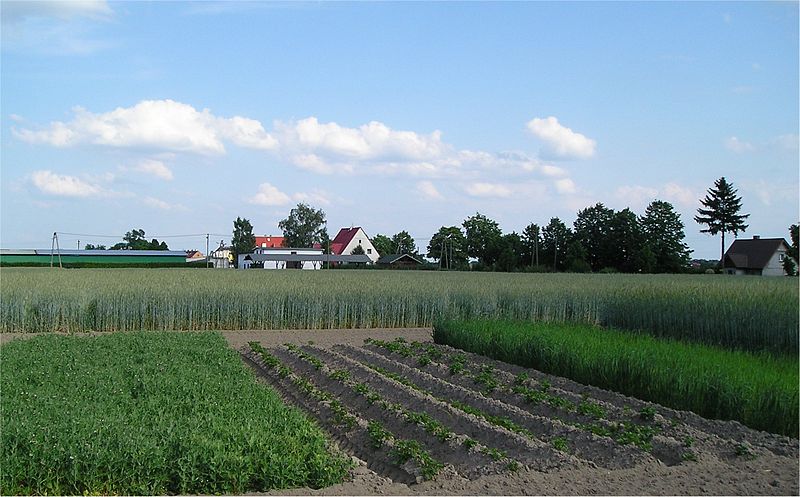
Crop rotation. Doing so kept soil quality high, letting a farm produce far more before it went barren.
 The Dutch had traditionally been excellent at soil restoration and at building canals. These skills were mandatory to the Dutch, as they had a tremendous population, but very little arable land. Despite that, the Dutch had been net exporters of food prior to the 1700s. By enforcing these techniques across much of their empire, except many regions of France who refused to conform on account of taste and a supposedly inferior product, especially in wineries, the Dutch were able to dramatically expand their working population base that was well away from the farmland that the majority had once called their lifelong calling.
The Dutch had traditionally been excellent at soil restoration and at building canals. These skills were mandatory to the Dutch, as they had a tremendous population, but very little arable land. Despite that, the Dutch had been net exporters of food prior to the 1700s. By enforcing these techniques across much of their empire, except many regions of France who refused to conform on account of taste and a supposedly inferior product, especially in wineries, the Dutch were able to dramatically expand their working population base that was well away from the farmland that the majority had once called their lifelong calling.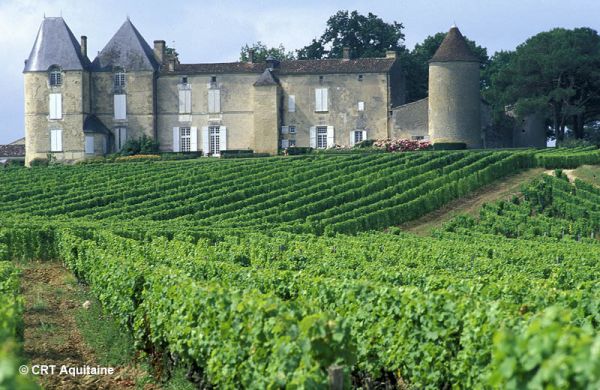
Bordeaux winery. These locations refused Dutch agricultural reforms, but increased their productivity in their own way.
 There were many other land reforms and agricultural innovations during this era. Seed planting drills, improved land laws and fatter, healthier livestock meant fewer farmers were producing more food.
There were many other land reforms and agricultural innovations during this era. Seed planting drills, improved land laws and fatter, healthier livestock meant fewer farmers were producing more food. This growing population meant more people to tax, and more people to fuel the many factories of the Dutch Empire. These factories of course, generated even further taxes. The most lucrative factories of the United Provinces were the punch card loom filled weaver’s. A punch card loom could weave elaborate patterns into the cloth without the need for skilled or dedicated workers. The hundreds of tons of cotton pulled from the Americas made for particularly popular, light weight and cool clothing for summer, with cotton made summer fashion costing a good deal through Europe. In another 10 years, these would be powered by coal and steam.
This growing population meant more people to tax, and more people to fuel the many factories of the Dutch Empire. These factories of course, generated even further taxes. The most lucrative factories of the United Provinces were the punch card loom filled weaver’s. A punch card loom could weave elaborate patterns into the cloth without the need for skilled or dedicated workers. The hundreds of tons of cotton pulled from the Americas made for particularly popular, light weight and cool clothing for summer, with cotton made summer fashion costing a good deal through Europe. In another 10 years, these would be powered by coal and steam. The second most lucrative industry in the United Provinces, was smelting. Creation of iron products from their many European mines, especially those around Alsace-Lorraine, were now industrial rather than local. While arguably, a steel bayonet essentially poured into a mould and then pounded into shape by machines was inferior to one made by a blacksmith working by hand, the sheer quantity of high quality iron and steel that could now be produced meant that what was once only a part of small items, no larger than a man sized suit of armour could be used to frame or reinforce buildings, add as structural embellishments, or even create entire bridges.
The second most lucrative industry in the United Provinces, was smelting. Creation of iron products from their many European mines, especially those around Alsace-Lorraine, were now industrial rather than local. While arguably, a steel bayonet essentially poured into a mould and then pounded into shape by machines was inferior to one made by a blacksmith working by hand, the sheer quantity of high quality iron and steel that could now be produced meant that what was once only a part of small items, no larger than a man sized suit of armour could be used to frame or reinforce buildings, add as structural embellishments, or even create entire bridges.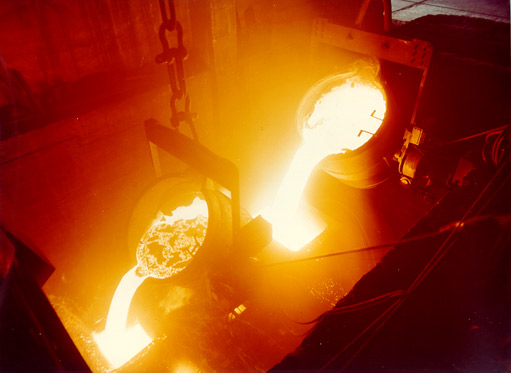
Cast iron foundries were far more productive than previous blacksmiths.
 These core industries were common in the industrial revolution, going from simple cottage industries where housewives would weave and local smiths would produce their goods. The small quantities meant that no serious economic growth was possible, but with the addition of new machines such as blast furnaces and powered looms meant these former household goods were shipped off in vast quantities at bargain prices.
These core industries were common in the industrial revolution, going from simple cottage industries where housewives would weave and local smiths would produce their goods. The small quantities meant that no serious economic growth was possible, but with the addition of new machines such as blast furnaces and powered looms meant these former household goods were shipped off in vast quantities at bargain prices. Other products would eventually become just as industrial as metal working and textiles, but for hundreds of years these were the simplest and most demanded products that could be readily machine produced. Metal in particular was worked into new buildings which could reach higher with thinner supports, and at the more destructive side, the metal was forged by the hundreds into cannons and shot to tear down those very buildings.
Other products would eventually become just as industrial as metal working and textiles, but for hundreds of years these were the simplest and most demanded products that could be readily machine produced. Metal in particular was worked into new buildings which could reach higher with thinner supports, and at the more destructive side, the metal was forged by the hundreds into cannons and shot to tear down those very buildings.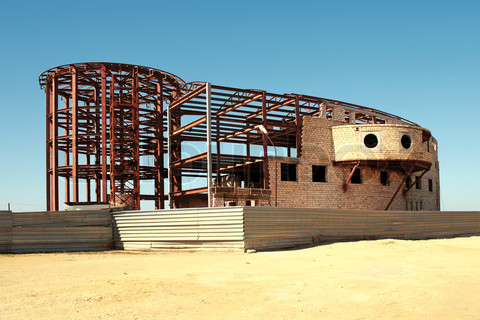
Steel frames allowed for superior, stronger, lighter, taller buildings.
 The Dutch were constantly innovating new ways to increase their productivity through the invention of more efficient machines. Coal power seemed to be just on the verge to them, and would play a major part of their agriculture, textile factories and iron factories within the next decade. These new factories would dramatically increase the productivity through the Empire, but would also cost more than the Dutch could honestly afford.
The Dutch were constantly innovating new ways to increase their productivity through the invention of more efficient machines. Coal power seemed to be just on the verge to them, and would play a major part of their agriculture, textile factories and iron factories within the next decade. These new factories would dramatically increase the productivity through the Empire, but would also cost more than the Dutch could honestly afford. Beyond the sheer industry and tax of the Dutch Empire, the trade for which they were so famed accounted for a tremendous sum of money. Fourty-six million guilders per year in trade income during 1726, the Dutch could not have afforded their massive army had they lost their access to trade partners across Europe, the Americas and the Mediterranean.
Beyond the sheer industry and tax of the Dutch Empire, the trade for which they were so famed accounted for a tremendous sum of money. Fourty-six million guilders per year in trade income during 1726, the Dutch could not have afforded their massive army had they lost their access to trade partners across Europe, the Americas and the Mediterranean. Trade was primarily conducted in either shipments of various constructed goods, such as clothes, dyes, worked metals and steel. All countries had some means of producing these products, and the tax tariff for trading them was fairly consistent and minimal, often equal amounts going from one country to the other. More lucrative were foreign trade goods. Spices, ivory, cotton, tobacco, coffee, tea, furs and sugars were all far more luxurious, and therefore expensive than other wares meaning a nation could make a premium off of those goods.
Trade was primarily conducted in either shipments of various constructed goods, such as clothes, dyes, worked metals and steel. All countries had some means of producing these products, and the tax tariff for trading them was fairly consistent and minimal, often equal amounts going from one country to the other. More lucrative were foreign trade goods. Spices, ivory, cotton, tobacco, coffee, tea, furs and sugars were all far more luxurious, and therefore expensive than other wares meaning a nation could make a premium off of those goods.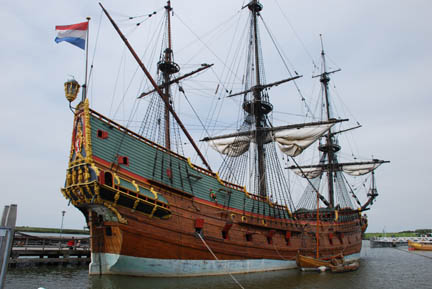
A V.O.C. Indiaman trade ship from France.
 The Dutch had been ousted from the East Indies by Britain, causing a tremendous spike in spice prices, but the other pricy commodity was still well supplied by the Dutch, that being ivory. The Dutch were the chief exporters of ivory, with hundreds of tusks from Madagascar being taken every year. Sugar was another important import, but over saturation of the market of cheap Dutch sugar had killed their prices somewhat, making it only valuable due to the sheer volume the Dutch were able to produce. Coffee from the Americas, tea from the East were exported in fairly small volumes, but were also considered fairly inexpensive.
The Dutch had been ousted from the East Indies by Britain, causing a tremendous spike in spice prices, but the other pricy commodity was still well supplied by the Dutch, that being ivory. The Dutch were the chief exporters of ivory, with hundreds of tusks from Madagascar being taken every year. Sugar was another important import, but over saturation of the market of cheap Dutch sugar had killed their prices somewhat, making it only valuable due to the sheer volume the Dutch were able to produce. Coffee from the Americas, tea from the East were exported in fairly small volumes, but were also considered fairly inexpensive.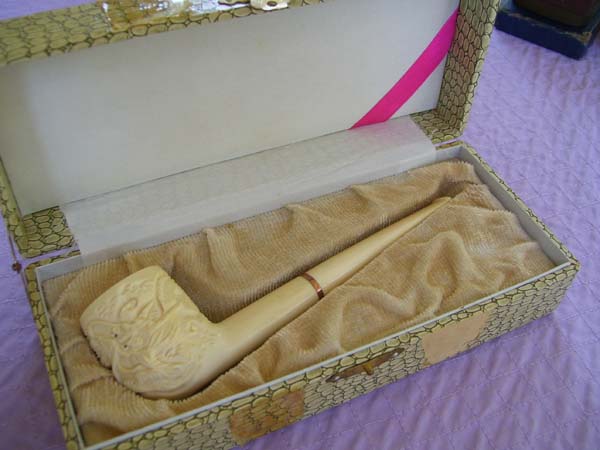
An ivory pipe was a common and sought after item. The Dutch encouraged their sale over other ivory products to promote the purchase of tobacco.
 The main harbour of Dutch trade was Rotterdam. All Dutch trade had to pass through Rotterdam to guarantee the proper taxes were being paid, the correct price was being charged on every commodity, and that all goods were being sent to the correct nation in the correct numbers. This meant the commercial basin in Rotterdam was constantly packed with merchants, salesmen, investors and hundreds of workers loading and unloading cargo.
The main harbour of Dutch trade was Rotterdam. All Dutch trade had to pass through Rotterdam to guarantee the proper taxes were being paid, the correct price was being charged on every commodity, and that all goods were being sent to the correct nation in the correct numbers. This meant the commercial basin in Rotterdam was constantly packed with merchants, salesmen, investors and hundreds of workers loading and unloading cargo.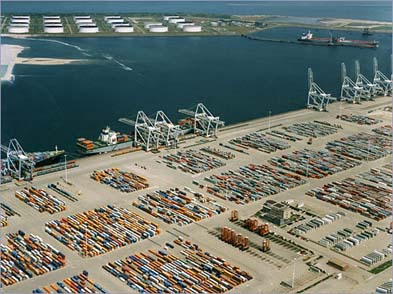
Modern Rotterdam Harbour is much the same as it had been in the 1700s. The methods are simply more advanced.
 The Dutch were trade partners with a tremendous number of nations. Hannover, the Ottomans, Savoy, Sweden, Venice, Italy, Portugal, Persia, Quebec, Russia, Prussia, Mexico, the Barbary Corsairs, Japan, Denmark and Saxony were the nations the Dutch traded with. Trade tariffs between each nation was over two million guilders per year, with the trade to Sweden accounting for seven million guilders per year alone guaranteed the Dutch would rely on nurturing trade between the other nations abroad.
The Dutch were trade partners with a tremendous number of nations. Hannover, the Ottomans, Savoy, Sweden, Venice, Italy, Portugal, Persia, Quebec, Russia, Prussia, Mexico, the Barbary Corsairs, Japan, Denmark and Saxony were the nations the Dutch traded with. Trade tariffs between each nation was over two million guilders per year, with the trade to Sweden accounting for seven million guilders per year alone guaranteed the Dutch would rely on nurturing trade between the other nations abroad. Many nations were gaining similar amounts of tax income from trade with the Dutch, meaning many nations wished to trade with the Dutch, even if they could not offer the same sort of lucrative foreign products that the Dutch could sell to them. This meant that while many still made millions of guilders from trade with the Dutch, the Dutch still earned far more.
Many nations were gaining similar amounts of tax income from trade with the Dutch, meaning many nations wished to trade with the Dutch, even if they could not offer the same sort of lucrative foreign products that the Dutch could sell to them. This meant that while many still made millions of guilders from trade with the Dutch, the Dutch still earned far more. At the time, the Dutch ports had saturated the ports of every nation that had a coast line and a trade port. Without any means to expand their trade Empire through new agreements, the Dutch could foster more lucrative trade with the partners they had by attaining more trade goods.
At the time, the Dutch ports had saturated the ports of every nation that had a coast line and a trade port. Without any means to expand their trade Empire through new agreements, the Dutch could foster more lucrative trade with the partners they had by attaining more trade goods. Increasing the trade of the United Provinces would require the creation of a new trade fleet, and the protection needed to retake the East Indies, or to expand their spice plantations in India. In the Americas, the increased output would not cover the price of improving their plantations as the cost of sugar, coffee, tobacco and cotton had plummeted.
Increasing the trade of the United Provinces would require the creation of a new trade fleet, and the protection needed to retake the East Indies, or to expand their spice plantations in India. In the Americas, the increased output would not cover the price of improving their plantations as the cost of sugar, coffee, tobacco and cotton had plummeted. Regardless, the Dutch were still netting over thirty million guilders every year. They didn’t entirely need to improve their total income. However, with a total military cost of seventy million guilders per year and a naval cost of two million guilders per year on soldier and sailor salaries, the Dutch were worried that if their trade partners collapsed on them, they would be down six million in debt every year. A catastrophic proposition.
Regardless, the Dutch were still netting over thirty million guilders every year. They didn’t entirely need to improve their total income. However, with a total military cost of seventy million guilders per year and a naval cost of two million guilders per year on soldier and sailor salaries, the Dutch were worried that if their trade partners collapsed on them, they would be down six million in debt every year. A catastrophic proposition. A war however, was not an ideal time to deal with a complete overhaul of their economy. With the army needing even further expansion, the Dutch would have to gamble everything on the army conquering profitable nations.
A war however, was not an ideal time to deal with a complete overhaul of their economy. With the army needing even further expansion, the Dutch would have to gamble everything on the army conquering profitable nations. Over the years, the Dutch would have to expand their army by over four thousand men to rapidly expand their war effort. At three hundred thousand guilders per pay period (bi-annually) for a battalion, the extra four thousand men would be an extra seven and a half million guilders per year. A value the Dutch could easily cover with their current income. Looking over the Dutch economy, they most certainly could afford the tremendous influx of new infantry across their Empire.
Over the years, the Dutch would have to expand their army by over four thousand men to rapidly expand their war effort. At three hundred thousand guilders per pay period (bi-annually) for a battalion, the extra four thousand men would be an extra seven and a half million guilders per year. A value the Dutch could easily cover with their current income. Looking over the Dutch economy, they most certainly could afford the tremendous influx of new infantry across their Empire.In the next broadcast of Empire: Total War, we will be looking at the Dutch defense. Holding their position during the army reforms, the Dutch are assaulted at all sides. Next we will be playing traditional Christmas carols. In half an hour, we will be discussing various soup kitchens where you could volunteer. World news has been moved back an hour for today and for the rest of the Christmas season. If you want news of the current war in the Middle East please channel in to BBC radio 1. David Stephenson will be presenting more on the 80 years war in 3 days.